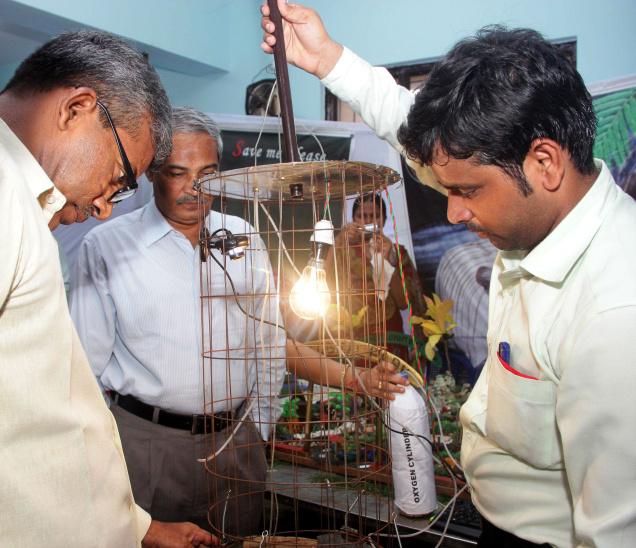
An indigenous baby rescue unit to extricate children who accidentally fall into borewells in countryside has been designed by a student of Acharya Nagarjuna University (ANU) here.
Hassan, a first year student of M.Sc. (Biochemistry), has designed a simple baby rescue unit, which he says, can be used to safely extricate babies from borewell pits, which sometimes are well over 100 ft deep.
His exhibit at the ongoing academic exhibition being held on Civil & Mechanical Engineering block has been catching the attention of viewers. ANU Vice-Chancellor K. Viyanna Rao asked the student to further modify the design and added that the university would support further research and development of the model.
Consisting of a cylindrical iron netted structure, the rescue unit has a bulb, a web camera and an oxygen cylinder tube attached to it. The structure is funnelled through the earth soil through extra pipes till it reaches the spot where the baby is located. Using the pictures beamed by the camera, the operator can use the trays at the bottom of the structure to extricate the baby with the soil. The continuous supply of oxygen with the tube helps the baby in staying alive during the operation.
“Conventional method of digging a parallel pit along with borewell consumes a lot of time and poses a risk to the life of baby. With the baby rescue unit designed by me, the whole operation gets completed within 2-3 hours and the precious lives of children can be saved,’’ Hassan told The Hindu.
Dean, College Development Council and Coordinator of academic exhibition, G.V. Chalam said that the exhibition featured innovative solutions including, solar based appliances, national disaster prevention mechanisms, NSS extension activities etc. The 10 science departments, professional colleges and University college of Pharmaceutical Sciences took part in the exhibition.
source: http://www.thehindu.com / The Hindu / Home> News> National> Andhra Pradesh / by P. Samuel Jonathan / Guntur – August 23rd, 2014








